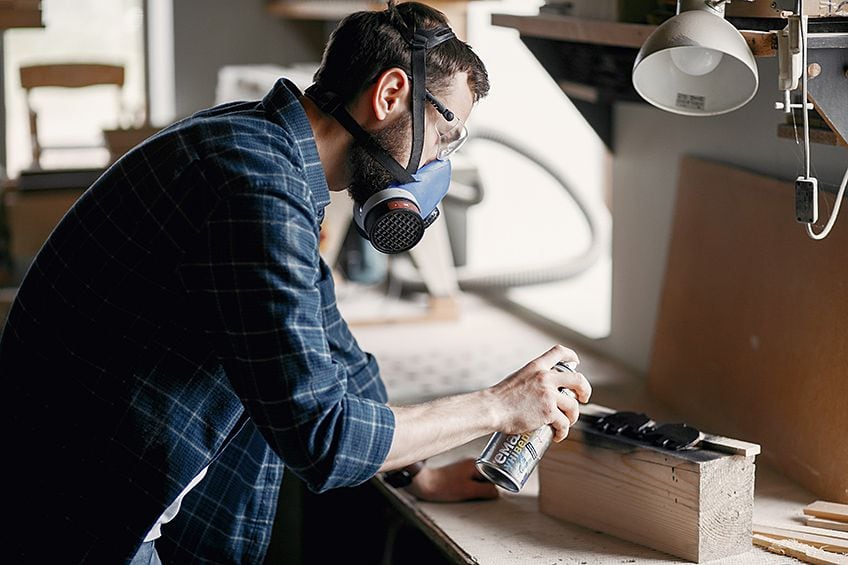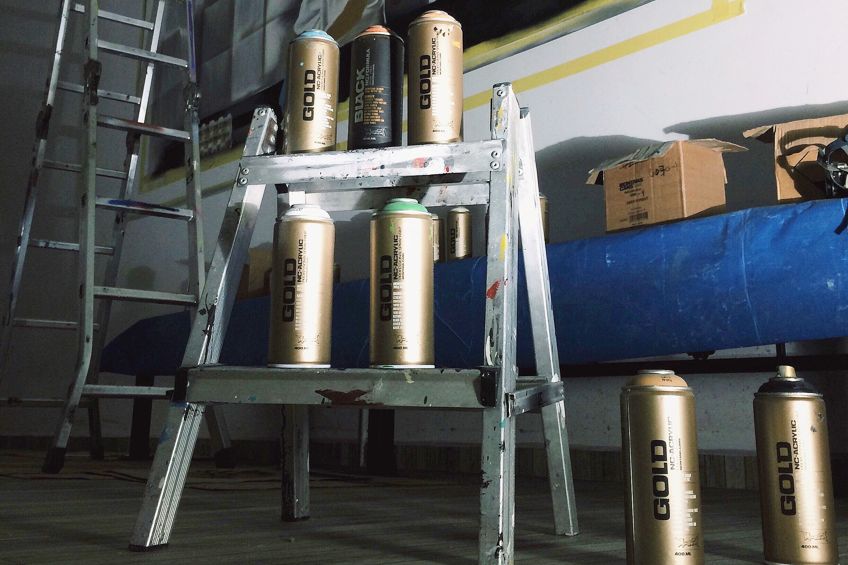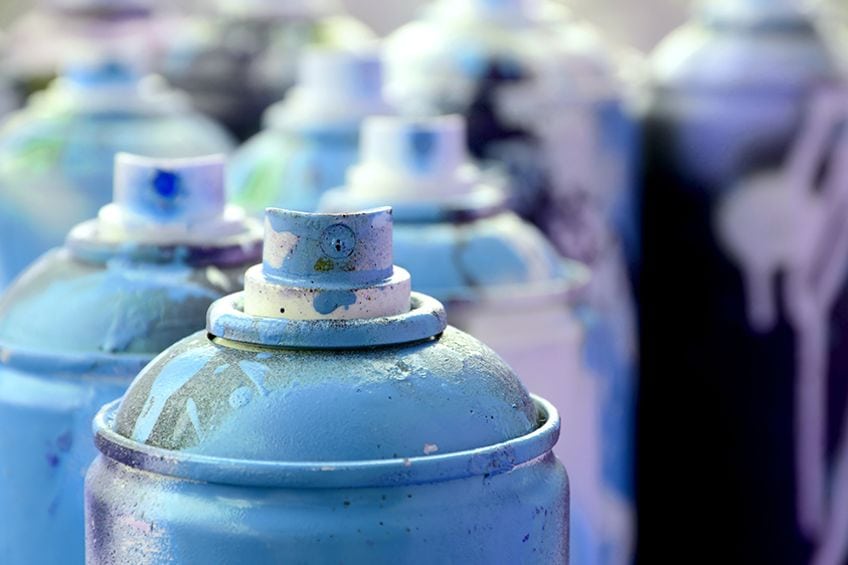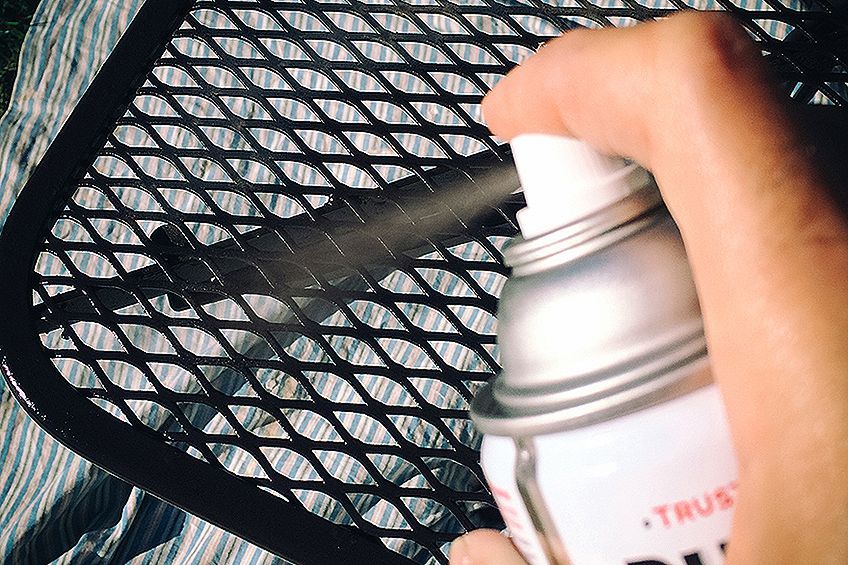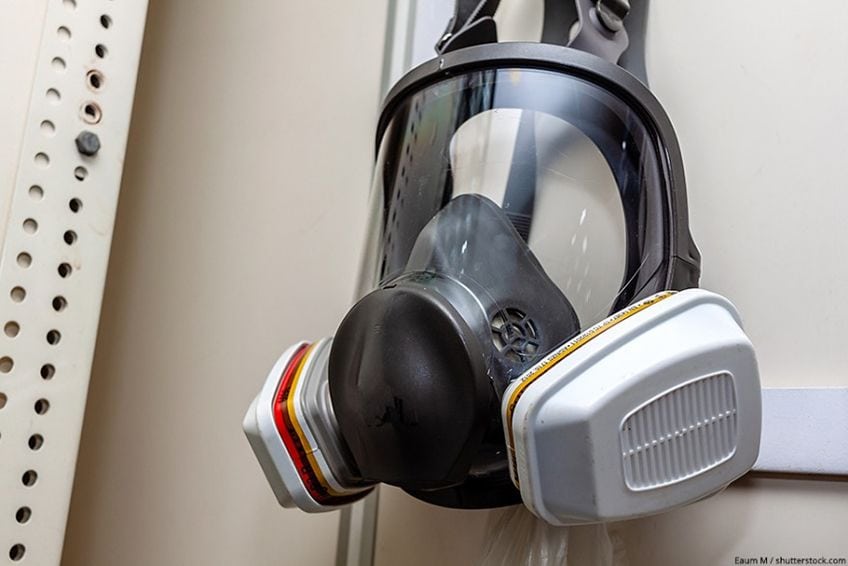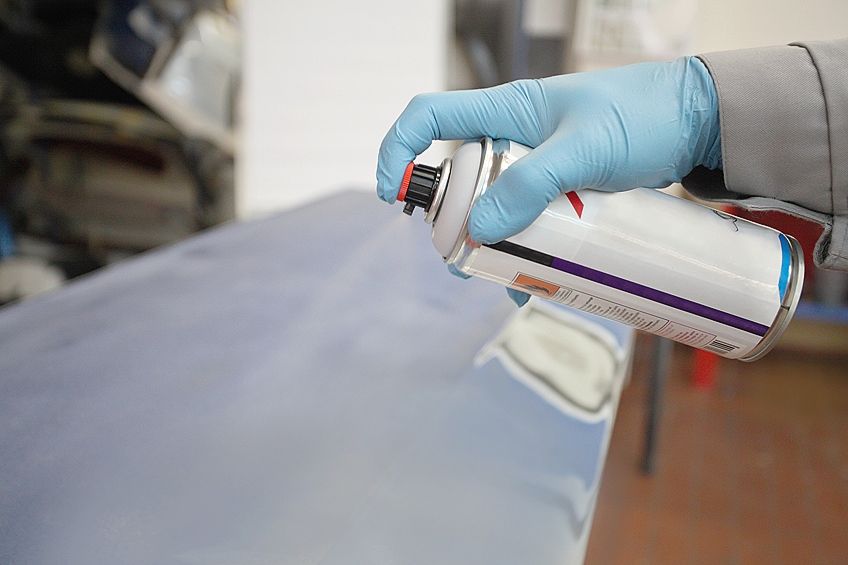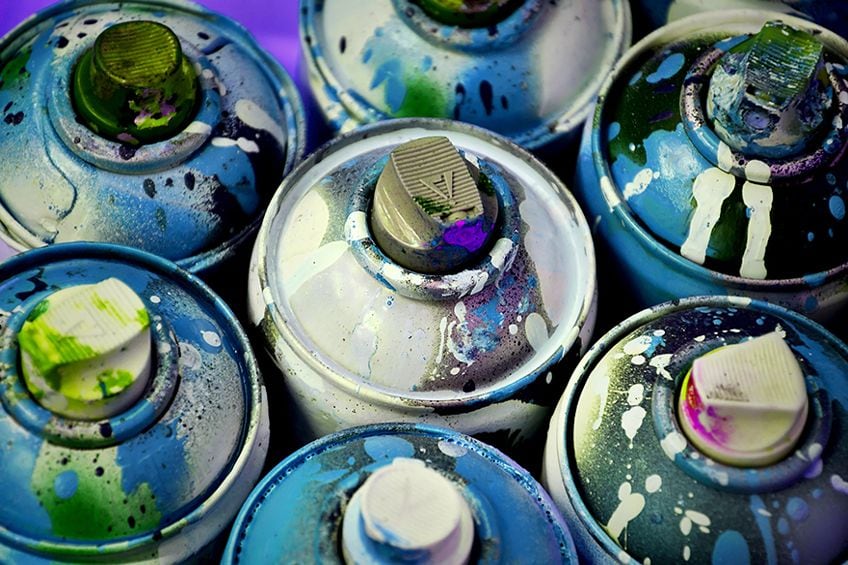Best Spray Paint for Metal – Complete Guide with Tutorial
This post may contain affiliate links. We may earn a small commission from purchases made through them, at no additional cost to you. You help to support resin-expert.com
Metals are one of those things that have been around for such a long time that most of us just take them for granted. Between the metal, in our cars, our homes, and even our phones it can be easy to forget that these metals need to be treated and painted before they end up as commercial products. So, what does it take to make these metals aesthetically appealing? Well, there are a few points you can use to make your metal workpieces look good, but not every paint works as well on metal, things being said let’s have a look at some of the dos and don’ts when working with metal.
Table of Contents
Which Types of Spray Paint Are Good for Metal?
There are roughly seven to ten types of spray paint that can be used to coat metal, but some of them require a lot more work than others to adhere to the surface. Much like glass, metal is a fairly sheer surface which makes it challenging for anything to stick to it, especially paint which relies on a surface’s ability to absorb it to bond correctly. So, which paints do this best despite metal not being porous or able to absorb them?
Well, oil paints do pretty well, and oil latex paints do an ever-better job because they are slightly thicker and a bit more paste-like. Other types of paint you could use if you are trying to coat metals are enamel paints or even oil-based enamel paints due to their ability to stain metal surfaces pretty well. Other paints can work fairly well if the surface of the metal is prepared correctly, therefore you should consider devoting a bit more time to preparing your metal workpieces than you would in comparison to surfaces like wood or ceramic.
Even if you have the best spray paint for metal might not work the way you intend it to if you don’t have adequate surface preparation and if you would like to know a bit more about that we have covered it below for your convenience. Different metals might have different preparation methods for the painting process, therefore properly researching your materials beforehand can provide you with the necessary insight into what its tolerances are and potentially what types of paint would be most beneficial to use for it.
Metals have different properties, so if a metal were to oxidize easily or be a particularly good conductor of heat you would choose paint to counteract these effects depending on what the application of your workpiece is. Ultimately the best spray paint for metal does not only depend on the strength of its adhesion, but the properties it will impact on the finished product as well.
| Type of Paint | Paint Properties | ||||
| Water-Resistant | Heat-Resistant | Abrasion-Resistant | Strong Color | Viscosity | |
| Oil Paint | ✔ | ✘ | ✘ | ✔ | Thin |
| Latex Paint | ✔ | ✔ | ✘ | ✔ | Thick |
| Acrylic Paint | ✔ | ✘ | ✔ | ✔ | Thick |
| Enamel Paint | ✔ | ✔ | ✔ | ✘ | Thick |
| Water-Based Latex Paint | ✔ | ✘ | ✘ | ✔ | Thin |
| Water-Based Acrylic Paint | ✔ | ✘ | ✘ | ✔ | Thick |
| Oil-Based Acrylic Paint | ✔ | ✔ | ✘ | ✔ | Medium |
What Are the Best Spray Paints for Metals?
Dealing with metal spray paint is a lot like choosing something to eat at a fancy restaurant. Everything looks good and you know most of it will taste great, but it really depends on what you’re in the mood for. There are certain characteristics metal spray paint can be designed with, such as insulation, built-in primer, heat resistance, water resistance, abrasion resistance, and even impact resistance. Let us have a look at some examples of the best aerosol paints for their respective application.
Best Protection: KRYLON COVERMAXX
Before you decide which color you want to paint your workpiece you should consider the implications of what the paint will do under the application of your workpiece. Knowing what forces your workpiece will be up against will help you decide what type of paint and which properties you would like your paint to have, a good example is resistance to oxidization.
Metals are used in rough environments so the problem that most metal workpieces face besides load-bearing forces is rusting. Thankfully you will have Krylon COVERMAXX as a possible solution to this issue. Krylon’s brand of products is world-renowned as some of the best protective and aesthetic coatings on the market today, and the COVERMAX line is no exception.
- The paint offers rust protection with a smooth and durable finish
- Offers a 2-in-1 paint and primer for ease of use
- The paint dries fully to the touch in only 10 minutes
Specially designed to prevent corrosion and oxidization, the COLORMAX product line is available in seven different color’s which will make your next workpiece pop while protecting it from the harshest conditions. If your metal workpiece is spending most of its time outside in either extremely wet or extremely hot conditions this coating will facilitate the expansion and contraction of the metal while preventing rust the entire time.
Available in a 12oz spray can, this series of products functions as both a sealer and primer which can save you a lot of time in the preparation process, what’s more, is that the combination paint/primer formula takes only ten minutes to dry which makes these paints ideal for those time-sensitive projects.
PROS
- Strong adhesive formula
- Versatile application
- Combination painter and primer
- Large color selection
- Reputable brand
- Prevents corrosion
- Robust formula
CONS
- The color appears muted when applied
- Expensive
- Can be challenging to handle spray can
Best Versatility: RUST-OLEUM Spray Paint Painter’s Touch
Many aerosol paints claim to be the best on the market, and they are all fairly new products developed with new technology and innovative production techniques. Rust-Oleum, however, has paved the way for many of these newer brands by being one of the industry’s most trusted brands for over 100 years. The Painters Touch range continues its legacy of innovation and at a fraction of the cost of newer brands, providing protecting and amazing textures in their wide range of colors.
The Painter’s Choice is a matt finish paint that also functions as a combination of spray paint and primer which will undoubtedly save you from the seeming eternity it can take for some primers to dry and adhere to metals. Have you ever had to spray at an awkward angle and the spray button simply won’t allow you to apply the necessary pressure? Well, the good news is that you won’t be having this problem any longer with Rust-Oleum’s new larger spray nozzle.
- Suitable for many surfaces like wood, plastic, plaster, and metal
- Oil-based formula is low odor and resists chips for longevity
- Dries to touch in 20 minutes and covers up to 12 sq. ft. per can
Although it is not an assisted nozzle that required less effort to pressure to spray, it does feature a larger surface area which will allow your finger to be in contact with the spray button, this means there are no breaks in the continuity of your strokes which ensures you get the best application and a great looking workpiece at the end of the day. The advantages don’t end there though, although you will likely be using your painter’s touch on metal surfaces you should keep in mind that this line of products can also be used on ceramic, plastic, plaster, and even masonry! How’s that for some value for money?
The painter’s choice line is dry to the touch in roughly 20 minutes and should dry completely in around 40 minutes to an hour, which is by far not the fastest drying paint on this list, but I suppose the team at Rust-Oleum had to compromise for low price and the paint/primer combination in one way or another. If you are looking to give your metal a noir vintage appearance then this line of products is what you’re looking for, the no-shine matt finish will provide you with a distinguished finish that will stand the test of time.
PROS
- Affordable
- Versatile
- Strong adhesion properties
- Matt finish
- Corrosion-resistant
- Heat resistant
- Ergonomic spray button
CONS
- Long dry time
- Low volume per can
- Finish may not appeal to everyone
Best Finish: DESIGN MASTER Aerosol Paints
They say that it doesn’t take money to make something great, just passion and determination. The team over at Design Master is certainly the embodiment of this saying, featuring not only the cheapest aerosol paint on this list but the one with the best finish as well. Design Master’s antique gold color is particularly impressive with its reflective tin-like appearance once it has dried completely.
You might be fooled and mistake this spray paint for electroplating, and you would be forgiven considering the quality of the finish. All of this beauty does have a drawback though; in order to obtain this flawless finish, there are no added benefits like dual action priming or long-lasting abrasion-resistant additives.
- The 12-ounce can will cover 16 square feet in a single coat
- The paint dries fully in only 5 minutes to help you paint quickly
- The sheer color builds into a glossy shine and tones surface colors
This does not mean that your piece has to be lost to the elements though, you still have the option of adding primer and/or a coat of resin to ensure protection from water and corrosion. This range of paints does come in the 11-ounce variety with a wide range of colors to choose from which are all in an extremely reasonable price range considering the quality of the finish, which means you should have more than enough cash left over to get some high-quality resin and primer.
Still not sold? Although you won’t be able to use this paint in foul weather, the paint does dry relatively quickly so the combination of this factor and the high-quality finish means you will be able to use it on smaller workpieces like jewelry and ornaments which other paints might not do justice. The Design Master range might not be the most robust product on the market, but it will provide you with a high-quality finish many other products in its price range simply do not offer, this being said the choice on which aspect to compromise on is entirely up to you.
PROS
- Priced to go
- Good finish
- Variety of colors
- Easy to use
- Strong adhesion
- Value for money
CONS
- Not dual-purpose
- Not versatile
- No abrasion/impact resistance
What Should You Look Out for When Buying Spray Paint for Metal?
Spray painting metal can be a tedious task, but the more you educate yourself about different types of metals and their qualities the easier it will be to select a paint. Selecting paint is pretty simple considering the manufacturer indicates exactly which surfaces the paint works on, the only aspects you have to consider are the color of the paint and additional characteristics you would like the coating to have, such as environmental protection and/or a primer combination. Let break these factors down and consider their impact on your workpiece.
Protection
Metal tends to have a pretty harsh lifetime. Most ores have the tendency to rust, scratch, warp, and even crack if the conditions are harsh enough. When spray painting metal you should consider the forces that will be acting on your workpiece, these can range from pressure to heat, to cold, to torsion, and even tension. You need a paint that will either be able to flex with your metal or protect the metal and mitigate the forces entirely. There are many paints like this that can protect your metal for virtually its entire lifespan, but there is often a price to pay for these characteristics in a paint.
As we mentioned previously, when the quality of the finish of the paint is high this typically means that the quality of protection and/or versatility of the paint decreases, and this is due to the additives affecting the final finish of the paint.
This creates a balancing act where you would like your finish to be satisfying to the eye, while having the peace of mind that your metal is protected, and you won’t have to touch it up in the near future. Paints that excel in both areas tend to be expensive, which could be why most professional sprayers simply apply their primer, paint, and sealer separately.
Finish
This one might seem a bit obvious, but if you will be using this as a checklist its best to mention it before you get consumed by the sheer number of paints on the market and go for a product that claims to do everything you should ensure that the paint you are choosing has a good finish. Depending on the look you are going for there are a variety of finishes available, namely matt, sheen, tin, gloss, and muted.
These finishes are characterized by the texture of paint once they have been applied to the workpiece and allowed to dry completely with no sealer or other additional coatings added to it. As we mentioned previously, when you purchase a paint-primer combination the finish will not have a high quality in most cases, but your finish and metal will be protected against things like heat, moisture, abrasion, and in heavy-duty cases even impact.
Adhesion
Spray painting metal is common, but this does mean it is easy, but like most things in life the more you do it the more proficient you become. One thing you might learn during your crafting journey is that some paints adhere to metal better than others. This depends on a number of factors including how you prepare the surface you are about to spray, but typically cheaper paints don’t spray as well, and you might end up using quite a bit of primer and spraying more thin coatings instead of few decently dense coatings to ensure the paint actually sticks to the surface.
Knowing this, what is the best way to test the adhesion of a paint? Well, we do have access to platforms like YouTube where reviews on paints are a dime a dozen, or simply check the comment and reviews section on the company’s website.
If you trust your supplier, you can ask them for their honest opinion on the product as well. Sometimes we don’t have much choice and we simply can’t find a better paint than one that adheres poorly; however, you can compensate for this by using a good quality primer and preparing your surface especially well. Go ahead be generous with your coatings too!
How To Spray Paint Metal Correctly
As you have probably gathered by now metal tends to get scuffed up and generally has a rough life. Fortunately for your precious metal belongings, you have the ability to give them a new lease on life. If you are wondering how to spray paint metal here are few steps you can follow to ensure that your painting experience does not involve the use of solvent and a paint scraper on your first, try. Remember to take your time with these steps as rushing the process can easily result in you missing an important step. It is always important to make sure that you are also keeping yourself safe during the painting process.
Set Up Your Workspace
The last thing you want when you are in the middle of spray painting steel is having to run around trying to find something. Preparing your workspace can save you a lot of time looking for things and even some clean-up time later if you are smart about it. Ensure that all of the tools are ready to be grabbed on the side of your workspace parallel to your dominant hand (right-hand right side, left-hand left side) and ensure that you have covered up anything that potentially gets paint on it.
Once your tools have been set up and your workspace has been covered, check that your workspace is properly ventilated.
Ideally, you would like to be working outside, but since space comes at a premium these days and not everyone lives in an area with great weather you can make do with space that has consistent airflow. Finally make sure that you have the proper protective gear like a filtered face mask, gloves, and eye protection.
Surface Preparation
Many agree that preparing your surface is the most important step when spray-painting any surface. Even the best spray paint for metal won’t work as intended if your surface has not been prepared correctly, and the first step in your preparation process will be cleaning off the surfaces of your workpiece which will be coated. You can do this by getting some steel wool or a wire brush if you have one. In either case, try and remove anything from the surface that does not belong there like rust, dirt, or previous paint which will hinder the adhesion process.
Once all of these bits have been removed you can remove any excess material with a damp cloth and soapy water, or if you have some handy, some cleaning alcohol will give you a slight edge. Allow the workpiece to dry in sunlight and inspect it to ensure the surface has been sufficiently scuffed up. Finally, make sure that you have taped up the parts of your workpiece you won’t be applying paint to.
Priming the Surface
Technically primer is still part of the preparation process, it deserves a separate mention. Now, if you have decided to go with a product that is not a combination of paint and primer you should get out your primer and give it a good shake (if the manufacturer recommends this), and then spray a bit on a piece of scrap cardboard to ensure the nozzle is working correctly.
Once you are sure it’s good to go, simply apply the primer to the surfaces of your workpiece you will be painting. It is pretty tough to use too many primers, but as it sets into the surface of the metal you should be able to tell what an appropriate amount looks like.
Tough metals, for example, if you were spray painting steel you might require two coats of primer, if so simply apply your coating and allow it to dry for the amount of time recommended by the manufacturer. Once the primer has dried completely, scuff up your surface again lightly, wipe down the workpiece with a dry cloth and apply your second coating. Allow this primer to dry completely and ensure the metal is clear of any left-over material before continuing to the next step.
Painting Your Surface
Before you begin spraying you should give your spray can a good shake. Once you are satisfied with the sound of the metal ball bouncing around in the spray paint can, you can begin spraying your workpiece. Start spraying off your workpiece at a decent workpiece, or in plain English start your pass (left to right or vice versa) at the edge of your workpiece and make one smooth unbroken pass the opposite end of your workpiece. Repeat this process and give the spray paint can a good shake in-between passes to ensure the paint does not lose viscosity when entering the nozzle.
Make sure that your passes are even and at an equal distance as it can be very easy to drift either toward or further away from your workpiece when you are not satisfied with the application.
This being said, make sure you get all of your workpiece’s edges and remember to be patient as holding the spray paint can do become quite strenuous on your wrist. Once you are satisfied with your first coat allow the paint to dry for the manufacturer’s recommended time period, once dry, inspect your workpiece for any contaminants like dust, and if there are any use a dry cloth to remove them and apply your second coat. A good thing to remember is that metals require fine coatings of paint as opposed to materials like wood that tend to absorb a lot of the paint into its fibers.
Sealing Your Surface
While most spray paint products these days do a good job of protecting your workpiece from things like sunlight and moisture they don’t permanently. When you purchase a paint that has primer or heat resistant properties (with the exception of high heat enamel paint) they offer a resistance that can be worn down pretty easily if the workpiece is exposed to the relevant forces consistently or excessively.
This is where a line of products called sealers comes in. Sealers come in a variety of formulas that cater to different needs, there are UV sealers, waterproof sealers, moisture sealers, and even heat sealers for all manner of materials such as wood, enamel, plastic, concrete, and metal.
Most sealers are easy to use and have a point-and-shoot operation, all you have to do is very lightly apply your sealant to your metal workpiece (as not to ruin your paint job) and allow it to dry for the manufacturers recommended amount of time.
Once dried, scuff up the layer you applied with some fine-grit sandpaper, clean it off and give it another coating. Once you are done you will have a fully primed, painted, and protected workpiece. If you are looking for a good sealer you should try this one from Rust-Oleum as it offers good coverage and great value for money.
Now that you know which types of paint or on woods, what an example of a good spray paint looks like, how to spray paint metal effectively, and even how to prepare and seal said metal is time for you to head out and test your newfound knowledge. Remember to always work in a well-ventilated area, protect your personal belongings by covering them up, wear the appropriate personal protective gear, and as always, be safe!
Frequently Asked Questions
Can You Paint Metal with Acrylic Paint?
It is possible to paint metal with acrylic paint although it will take some substantial preparation to ensure that the paint adheres to the metal. This being said you should check which types of paints are more conducive to bond to which types of metals.
Can You Spray Paint Metal?
Can you spray paint metal? Absolutely! Spray painting metal requires some research and preparation of the surface but there are lots of paints on the market which work perfectly well with all types of metals. Ensure you properly prepare your surfaces before painting and allow the appropriate amount of time for your paint to set and dry.
Does Paint Last on Metal?
Metal is a sheer surface and unlike wood does not absorb paint into its fibers. This means that painted metal often requires a lot more maintenance and upkeep compared to wood and concrete. Using paints that are specially designed for metal is one of the best options if you want your coating to last.
How Long Does Spray Paint Take to Dry?
One of the more commonly asked questions when discussing painting metal is how long does spray paint take to dry? The truth is that spray paint can take up to 40 minutes to dry depending on the composition of the formula. Faster drying spray paints are easy to come by, but you might have to sacrifice other characteristics to benefit from this.


